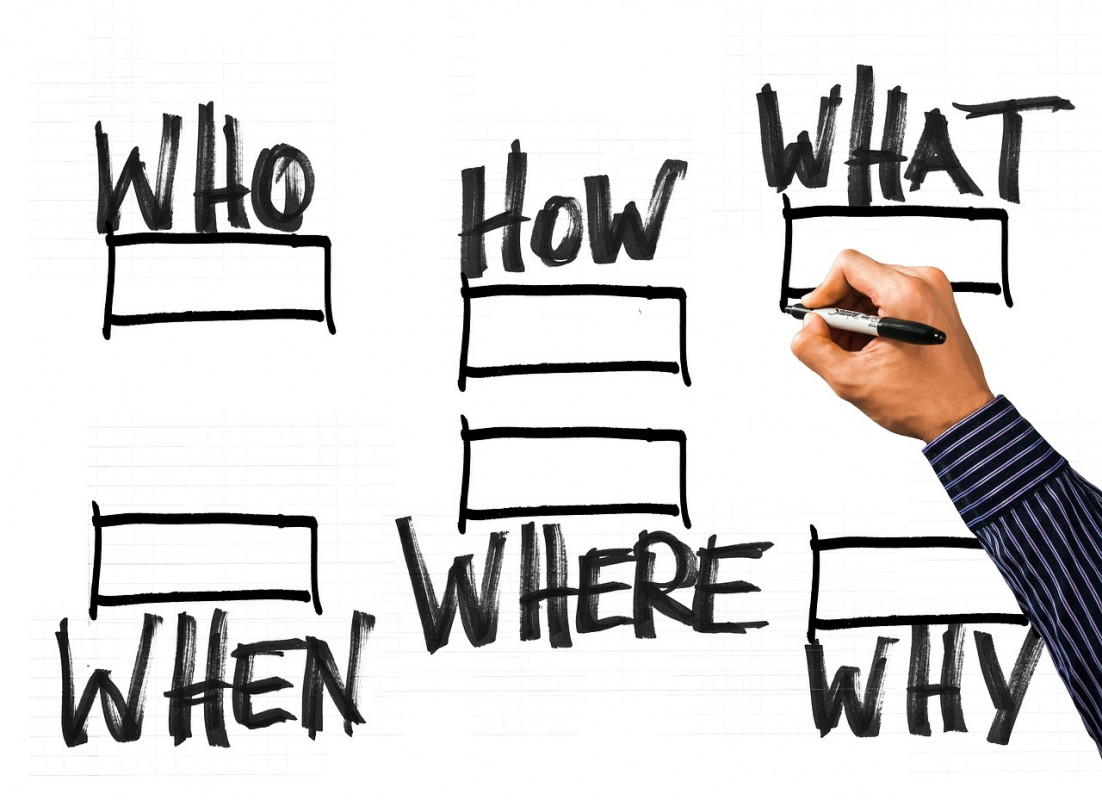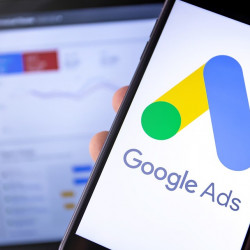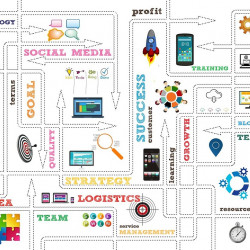A marketing plan is a document that outlines what your business intends to do and how. For example, it could list the campaigns you wish to run and how they'll be run (e.g. flyers, social media, etc.), the message they'll be promoting, expected outcome of the campaign etc. It's all about evaluating where you are now and considering where you want to be and then planning how to get there.
Where do we begin?
Most businesses will have some of the key elements already in place, such as a mission statement, objectives, market knowledge, marketing audit etc.
Mission statements are often just a sentence or two that describe what the business does. It's usually an aim for the business - one you're always working towards. For example, consider these from 3 big brands:
To be Earth's most customer-centric company, where customers can find and discover anything they might want to buy online, and endeavours to offer its customers the lowest possible prices
Amazon
Organise the world's information and make it universally accessible and useful
To be the most trusted retailer, where people love to work and shop
Sainsbury's
So where does your business sit? What is the ultimate goal of your organisation? This then leads on to your objectives; smaller steps to help you achieve the mission statement.
Stepping Stones
Thinking about how you're going to reach your ultimate goal, your objectives will be the stepping stones along the way. These are often smaller steps which are achievable.
If you had a mission statement similar to Google's (above), how do you reach it? Just think about the products they've launched over the years and how it relates to this. The one they're known for, search, is clearly about organising the world's webpages. But it's now more than that, including hotel listings, reviews, photos, directions, and much more. Tagging on to this is Google Images, Google Shopping, Google Maps (and streetview), Google Books, and many more.
Be a SWOT
It's important to evaluate what you have now and where you currently stand so you know where you're starting from. SWOT Analysis is a handy tool for this. SWOT stands for Strengths, Weaknesses, Opportunities, Threats.
Consider this example for a bus company expanding into a new area:
Strengths
- New fleet of buses
Weaknesses
- Name not established in the local area
Opportunities
- Local bus route contracts due to expire and will be open to tender
Threats
- Government subsidiary may be discontinued
This is a great way to see where you're at right now, enabling you to work on where you're going.
Route to success?
Where are you heading to? Think about your objectives, how are you going to progress the business to meet these objectives? This will form a core part of the strategy, typically divided into 4 potential options, known as Ansoff's matrix:
- Market development - Are there new sections of the market you could target? Consider growing markets for example.
- Market penetration - Are there parts of your current customer base you could target to increase sales? Think about upselling and upgrades.
- Product development - Can you develop your existing products further? Are there new products you could offer to your existing markets?
- Diversification - Are there new products you could be offering to new markets? Perhaps something to a market you can't currently target with your existing products and services?
What can you do to travel this route?
Once you've considered what route you're going down, what can you use to get there? Essentially, this is a tactical plan which focuses on short-term actions that can help you reach your end goal.
This is where you will need to bring in the 7Ps - Product, Price, Place, Promotion, People, Process, Physical Evidence.
These should all be taken into consideration when developing your marketing plan. Think about what needs to be done, how long it's going to take (including a timeline of events can be helpful), who's going to do it, and any barriers you may face along the way. And once you have all this in place, you know the resources you're planning to use which allows you to factor in your budget.
This could also be made up of various forms, such as advertising, surveys, product launches, even just communicating better with customers.

Lights, Camera, Action!
You've got your action plan and it's time to put it into play. This isn't going to be set in stone, so don't panic if you deviate from it slightly. There are things that may not work as planned or external factors that will get in the way. But now everyone knows what's expected, how long it takes, what they're all working towards and who's doing what.
Wrapping up
This should hopefully help you touch on the basics of your marketing plan. But just remember, it is just that - the basics. You should be considering the whole business, and if relevant, various departments too.
Think outside of the box - it's not just marketing which can help. Customer Service, for example, can help with customer interaction too.





